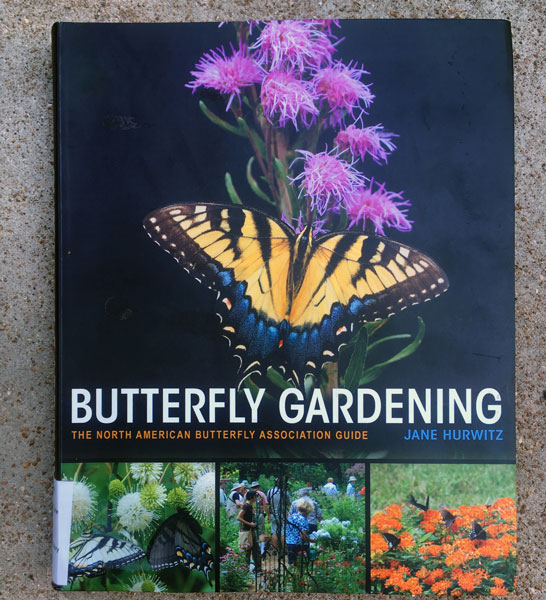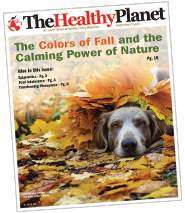
By Linda Wiggen Kraft
Attracting butterflies to home gardens is part of the work of the North American Butterfly Association. To help homeowners figure out exactly what butterflies need to survive and thrive in a home garden, they recently published a 288-page book that gives detailed information about how to create habitat that supports butterflies in all of their life cycles.
The title is Butterfly Gardening, The North American Butterfly Association Guide.
There are three main considerations for a butterfly garden. Most importantly, it is full of flowers. Most butterflies need flower nectar to survive. Flowers blooming from spring through fall are best. Some flowers are better than others for butterflies. They need easily accessible nectar. Their long straw-like tongue called proboscis draws nectar in. Single flowers where petals don’t cover the center nectar producing parts are the best food source. As much as gardeners like double petals in some flowers, the nectar source can be weak and inaccessible. An example is Echinacea, purple coneflower. The newer multi-petaled differently colored Echinacea flowers don’t produce as much nectar as the native plant. The common Purple Coneflower has over 300 individual florets making up the cone. These florets open over time attracting butterflies and other insects as they bloom. Sunflowers also have hundreds of florets that bloom over time and allow butterflies to get lots of nectar at one place, saving energy by not having to fly from flower to flower.
Butterflies come in different sizes. Having a wide variety of flowers will provide nectar plants for large and small butterflies. Different flowers match different proboscis and butterfly sizes.
Nectar producing plants are both native and non-native. The Butterfly Gardening book gives plant lists for different regions including annuals, perennials, shrubs and trees. Some annuals with their long bloom are great choices. Large zinnias and tithonia, Mexican Sunflower, are butterfly favorites. They are large enough to be landing pads for butterflies needing a support to land to sip nectar.
The second most important part of a butterfly garden is larval host plants. These are plants caterpillars need to eat once they hatch from the chrysalis. These plants are specific to specific butterflies. For example Monarchs need milkweed, the only plant monarch caterpillars can eat. There are native milkweed perennial asclepias plants for Monarchs including ascplepias tuberosa, incarnata and syriaca. There is also a non-native annual, asclepias curassavica that blooms all summer providing a long nectar source.
The regional lists of plants in the Butterfly Gardening book shows nectar producing plants and also if it is a larval host plant that caterpillars will eat.
The third most important thing is to think of your garden as a habitat. A habitat supports the entire butterfly life cycle. It has flowering plants that provide nectar for butterflies, plants butterflies can lay eggs on and larval host plants caterpillars can eat when they hatch from eggs. A butterfly habitat is pesticide free and cleaned up based on the life cycle of the butterfly, not the neighborhood norms. Caterpillars chrysalises and some eggs over winter in leaves and garden plants. If the leaves and garden plants are cleaned up before the caterpillar emerges in the spring, the butterflies will be destroyed. The Great Spangled Fritillary is an example. The butterfly lays eggs in late summer or fall on or near violets. In a few weeks the caterpillar emerges and eats only violets. It then goes into an anti-freeze like winter state in leaf and garden litter. In the warmth of spring the caterpillar emerges, eats more violets and soon becomes a chrysalis and then a butterfly.
There is much more information about butterfly gardening in this book. Gardens can also become an official Butterfly gardens through the North American Butterfly Garden Association – www.naba.org. Enjoy and help save these amazing creatures of the garden.
Linda Wiggen Kraft is a landscape designer who creates holistic and organic gardens. She is also a mandala artist and workshop leader. Please Visit her blog online at: www.CreativityForTheSoul.com/blog or her website: www.CreativityForTheSoul.com. Call her at (314) 504-4266.


